
Friday, August 31, 2018

San Clemente kelp forest by Steve; an aggregation of kelp forms a marine environment sheltering many other marine creatures, including an initial phase California Sheephead (Semicossyphus pulcher).
The last several summers were marked with a tinge of regret. How could another year be passing without diving in our local waters? Although cold and sometimes dark, the kelp forest can be a sublimely beautiful environment. I feared if we didn’t get back into it soon, we never would. Although we amassed a considerable cold-water diving experience back in the 1990s, we hadn’t dived locally in Southern California waters for at least 10-15 years. Back in the 1990s, we had been regulars on the Vision, a live-aboard dive boat out of Santa Barbara. Several issues conspired to refocus our diving toward more distant, warm and tropical, frankly easier destinations, while Europe and my rabid mid-life francophilia dominated our non-diving trips. During one particularly bad year with Steve’s back, he couldn’t stomach the idea of diving in a drysuit, requiring him to wear additional weight to offset the suit’s buoyancy. The reality was, our 50s had not been especially kind to us. We gained more diagnoses and gradually found ourselves not snowboarding, mountain biking less and generally being more risk averse and more aware of the life-altering costs of injuries. But, as Steve entered and I approached our 60s, we found ourselves mostly recovered from bouts of bad back (Steve), year-long sieges of frozen shoulder (me), adjusted to the addition of hearing aids and CPAP breathing devices to our retinue (Steve) and missing the kelp forests which line our watery coastal backyards.
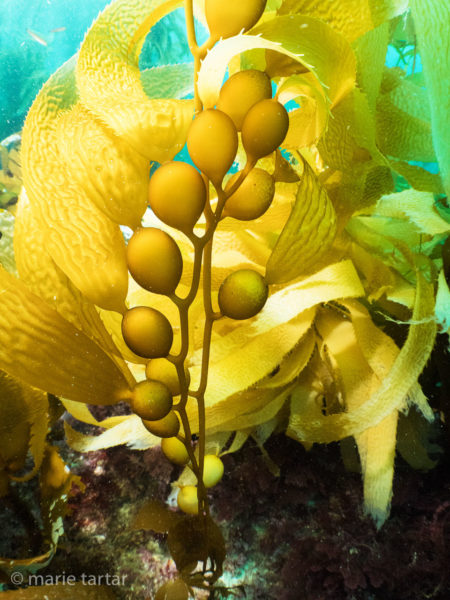
The signature species of the kelp forest, Macrocystis pyrifera, is not a plant but a large brown algea. The bulb-like pneumatocysts are gas-filled bladders and hold the kelp stalk upright in the water column. Photosynthesis takes place in the leaf-like fronds.
Strangely, it took a solid month of labor to ready ourselves to do a return trip to cold water. Appropriately enough, the long-awaited plunge took place over Labor Day. To make these preparations worthwhile, we needed a multi-day trip as a goal, a reward and a deadline. I found a 5-day trip on the Vision, but it was fully booked. We were 6th on the waitlist, which we eventually cleared, but too late, only a few days before departure. In the meantime, I committed to a 3-day trip over Labor Day on a boat out of San Pedro called the Magician, planning to go to Cortez Banks.
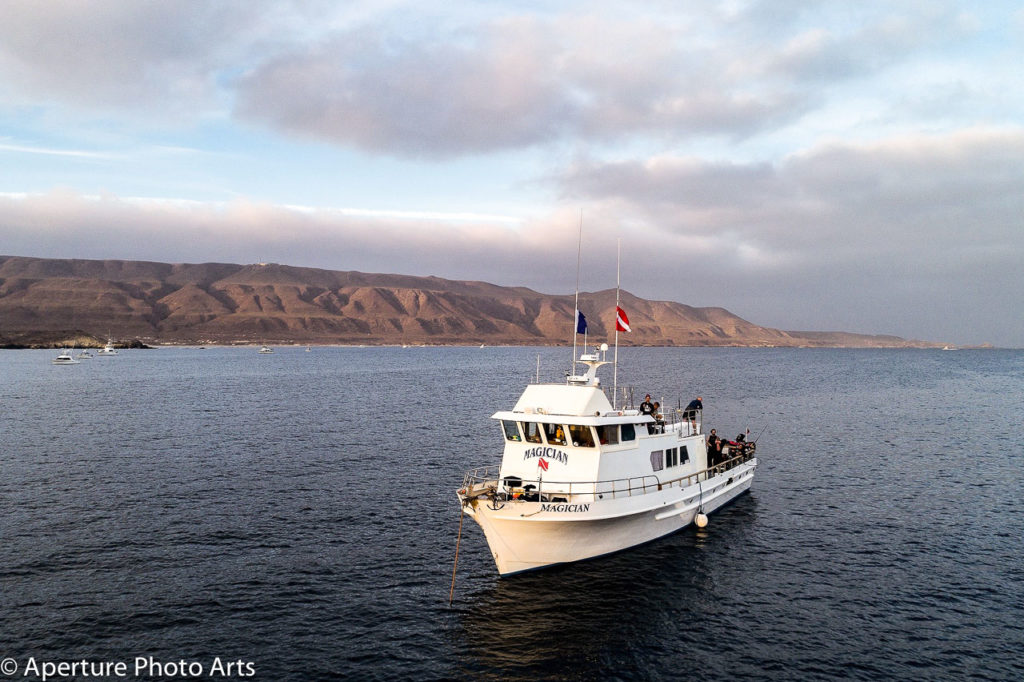
Our Labor Day weekend home, the Magician, based in San Pedro, California, anchored near San Clemente Island.
In all those years, this was a southern California diving destination to which we’d never been. It is far, beyond Catalina, unprotected from swells, being completely submerged. We raised an eyebrow at work when Chuck showed us pictures of 50-foot waves taken there, but we figured the boat would decamp to Catalina or San Clemente if the conditions didn’t cooperate for diving, which is exactly what happened. We needed to bring our own tanks and weights, in addition to our diving gear and of course, our cameras.
Multiple preambulatory trips were made to our local dive shop, Ocean Enterprises, to have our long-neglected steel tanks serviced and to assess our drysuit readiness. I ordered a new drysuit, a DUI trilaminate. Another trip took us down to Chula Vista to have Steve’s crushed neoprene Northern Divers suit refurbished with new seals and pressure tested. Two weeks before departure, my drysuit arrived at the shop. I took my drysuit underwear in to try it on, but the consensus was, the suit was too long. Another size was ordered, which came in 2 days before the trip. The shop no longer trims the latex wrist and neck seals for clients, leaving me to consult YouTube. Before I knew it, the neck seal was suspiciously comfortable, indicating it almost certainly was too big and would leak. On Thursday morning before our Friday evening departure, I called the dive shop in LA that was running the trip, Eco-Divers. No problem, they had a replacement seal. I had arranged an advanced certification course with an Eco-Divers instructor, Zach, who would bring it to the boat. Crisis averted, I thought. He brought a traffic cone and scalpel and quickly had a new drysuit seal correctly sized for my pencil neck.
Although we’re quite experienced underwater, we had never bothered to obtain an official advanced certification. The fact that one can obtain this certification immediately after being certified always seemed a little suspect to me, bringing to mind the old joke that PADI (Professional Association of Diving Instructors) actually stands for Put Another Dollar In. Only on our most recent trip, to French Polynesia in June, had this been a potential issue. Since we plan to return to French Polynesia next year, this seemed a good opportunity to burnish our credentials. We were both a little nervous about diving in drysuits again without a refresher course, but hoped fervently it was the aquatic equivalent of riding a bicycle.
The phone rang at home at 7:30 pm as we were loading the last of our gear into the car. It was Zach, saying Get up here! We zipped up unimpeded by traffic, making it to San Pedro in 1.5 hours.
Saturday, September 1, 2018
San Clemente
Waking up after a rough night on board, we were anchored next to an island, confirming we were at San Clemente Island and not at Cortez Banks. This was not unexpected. When we boarded the boat the prior night, we heard tuna boats were not heading out due to the predicted size of the swells. If tuna boats were not heading there…. imagine the vomitorium!
We beat the Vision to a first dive at The Arch. We both ended up doing our inaugural cold water dives without cameras, Steve feeling it was enough to do a first dive in more than 10 years in a barely used drysuit, with a new dive computer as well. I never made it into my new drysuit, finding myself struggling with the neck seal’s angled Ziplock mechanism, trying to reattach it to the suit, while the other divers disappeared one by one into the water. I finally gave up and hurried into the 7 mm wetsuit which I had brought as a backup. Passing through the signature arch, a large black sea bass retreated after a too quick glimpse.
Before the second dive at East Kelp, I spent the surface interval struggling to seat the drysuit’s neck seal, aided by fellow DUI-suited diver Kevin. We eventually decided the new replacement seal from Eco-Divers was not the right type. After he succeeded in securing the original neck seal in place, I put the suit on completely for the first time. Everyone agreed, the neck seal was too big and would leak. The suit itself looked too big. I found myself rushing again, now trying to tear it off to get back into a cold and clammy wetsuit.

Macrocystis provides shelter for other animals, such as this barnacle-encrusted Norris’s top snail (Norrisia norrisi)
Somehow, despite icy cold currents of water at depth in the 60s, I managed to do 4 dives by the day’s end, including China Point. We both bailed on the night dive. On my last, initially unpromising, 4th dive, I found an appealing subject and worked it, an orange Norris top snail, swaying on a kelp stalk in the water column.
We bookended the day with drone flights. It was a relief that we had finally made it back into the kelp forest. The swirling of kelp around the legs was familiar, that faintly insistent tugging sensation that impedes forward progress, sometimes requiring spinning around to gently disentangle. We were back and that felt good.
Sunday, September 2, 2018
San Clemente Island
Window pane is a dive site adjacent to a craggy section of the rocky island, pockmarked with alcoves and shallow cave-like openings. This is an underwater pinnacle, rising to within 25 feet of the surface at the highest point. Zach directed us to go to 100 feet and spiral our way up. Navigation was easy, as the anchor was at the pinnacle.
Down below, it was dark and COLD, despite the heated cummerbund of Kevin’s which I tried out on this dive. There were beautiful gorgonians protruding off the stony wall. In the shallows, rocky crevices concealed sea urchins, eels and lobsters, including a co-habitating eel and lobster pair.

Strange bedfellows: California moray eel (Gymnothorax mordax) and California spiny lobster (Panulirus interruptus), San Clemente Island
Garibaldi darted around the brownish algea, occasionally daring to peck us.

Garibaldi (Hypsypops rubicundis) are damselfish, pugnacious and territorial; San Clemente Island, by Steve
I was so cold afterwards, I opted to skip the second dive. The third dive resembled our local San Diego snorkeling reefs: pink algea, brilliant green seagrass and dark mustard yellow kelp. Fish darted in and out of cover, as the grasses slithered back and forth with the ceaseless, restless surge.
Neither Steve nor I could rouse ourselves up for the fourth, late afternoon dive, despite it being the expected site for our night dive and brilliant sun finally appearing.
We launched the drone to explore a cave we could see in the island’s face, but fighter jets streaking across the ocean nearby encouraged us to bring it in after 2 flights.
The current was picking up toward the end of the dive, with a later-returning pair of divers having to pull themselves into the boat by the long current lines affixed to the stern. In addition to the drysuit and more weight, reduced visibility, powerful currents and surge, I’d forgotten the other reasons why California diving is so much harder than tropical diving. In general, there is less coddling of divers. You are expected to haul yourself out of the water, gear and all. It had been so long since I had done that, I’d almost forgotten how dreadfully and suddenly heavy the tank becomes on your back when you transition from in water to out. Most tropical destinations have crew who haul your kit out of the water after you take it off, leaving you only yourself to negotiate up the ladder. Another big difference: in many locales, you dive and when you are done, you ascend and a skiff comes and picks you up. In California, although the live-aboard boats have chase boats, it’s clear they are for emergencies ONLY. The expectation is that you find your way back to the boat, one way or another. In the event of a miscalculation, this could involve a long surface swim.
The planned night dive was nixed due to current and we pulled anchor and headed toward Catalina Island while it was still light.
Monday, September 3, 2018
Labor Day-Catalina Island
Farnsworth Bank was our morning’s destination, a deep underwater pinnacle on the backside (oceanside, so unprotected) of Catalina Island. We’d been before and remembered it as an exemplary site, renown for abundant California purple hydrocoral (Stylaster californicus). The anchor was set on top of the shallowest point, about 55 feet deep and we were admonished to descend and ascend holding on to the line. Indeed, heading down the line was a descent into a green, dark, alien world. The pinnacle itself wasn’t visible until we were effectively on top of it. Ian, another Panasonic GH5 shooter, showed me what would prove to be my best subject of the trip, an octopus. At first, it was slumped into a rocky crevice, well camouflaged. I waited it out and was rewarded with it coming out and oozing from spot to spot over the reef.
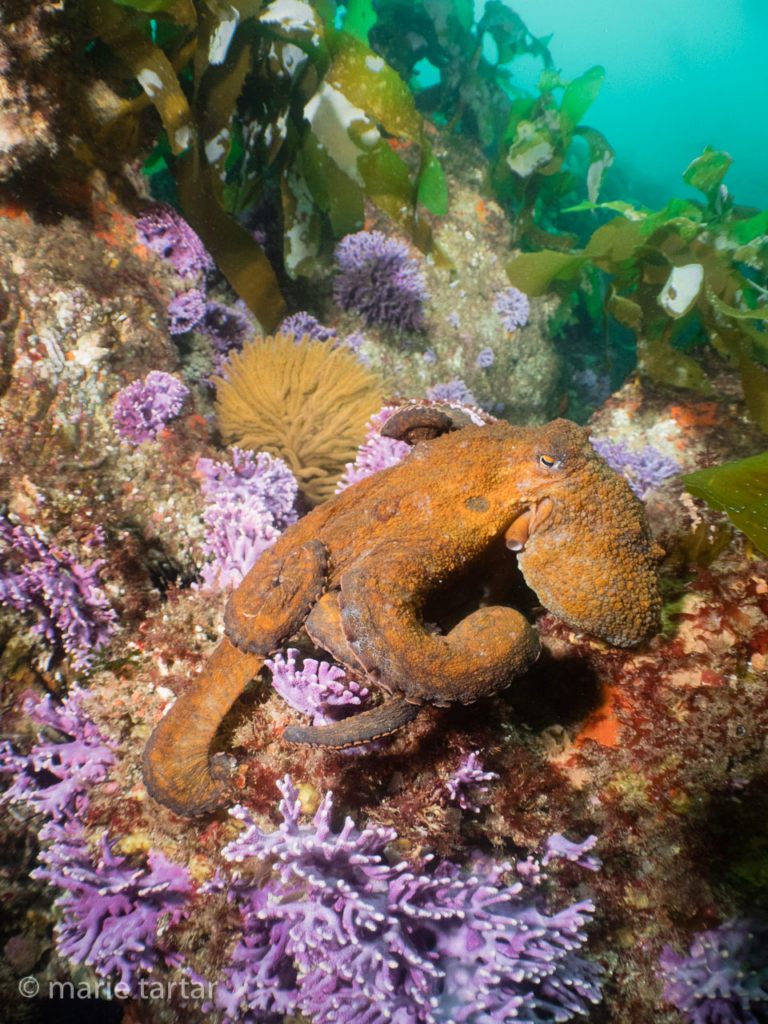
Two spot octopus (Octopus bimaculoides) in a bed of purple hydrocoral, a signature of advanced Catalina Island dive, Farnsworth Bank.
Steve had switched his rig over to macro for the prior night’s night dive that didn’t happen, so elected to shoot macro for our final day, with some lovely results:
I tried out my video capability on the final, 3rd dive, at West End. The water was full of particulates and the swaying surge never relented.
We had multiple goals for this trip, most of which we accomplished. Steve got back up to speed with drysuit diving. He had minimal prior experience with this particular suit before our long cold-water diving hiatus. By unexpectedly having to dive in cold water in a wetsuit, my motivation to get back into drysuit diving was strongly reinforced. We both had new wrist-mounted Suunto Eon dive computers with which we needed to become familiar. My camera system was new, so I wanted to make sure I had it together correctly. (I had rented a comparable system for French Polynesia in June, to be sure I liked it enough to buy it.) It was a lot to pack into a 3-day weekend, but other than my drysuit fiasco, everything went about as well as it could have. It was wonderful being back in a kelp forest, even in a wetsuit. Now, I’m planning on making this an annual summer trip and have some breathing room until next summer to sort out my drysuit. Oh yeah, we officially became Advanced Open Water certified and made some nice new friends in the process. Until next summer…
-Marie
Kelp forest with kelp bass (Paralabrax clathratus) and senoritas (Oxyjulis calfornica).
Magician pros: Nitrox, leaves from San Pedro, hot showers, enter water from side gate, water level swim platform at stern, easy exit, nice crew.
Cons: Minimal storage (hammock in sleeping berth), need to bring sleeping bag or sleep sack, towel, tanks and weights (like most Southern California boats).

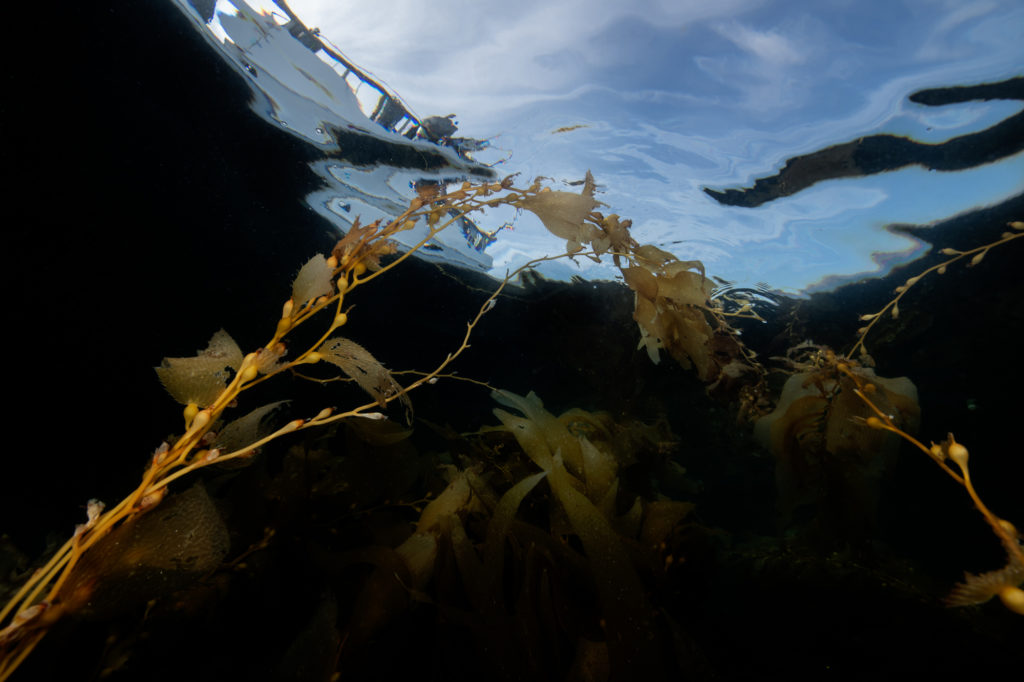

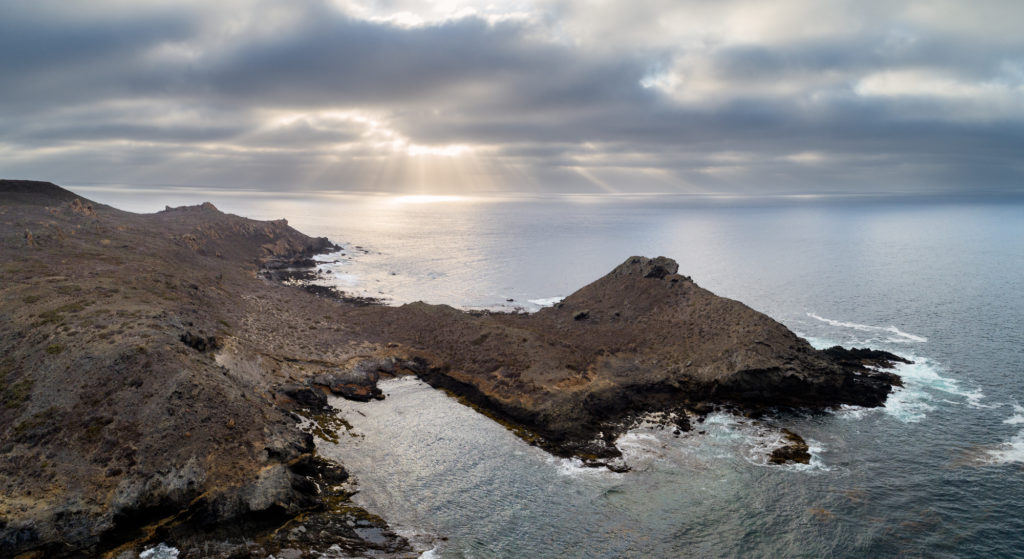

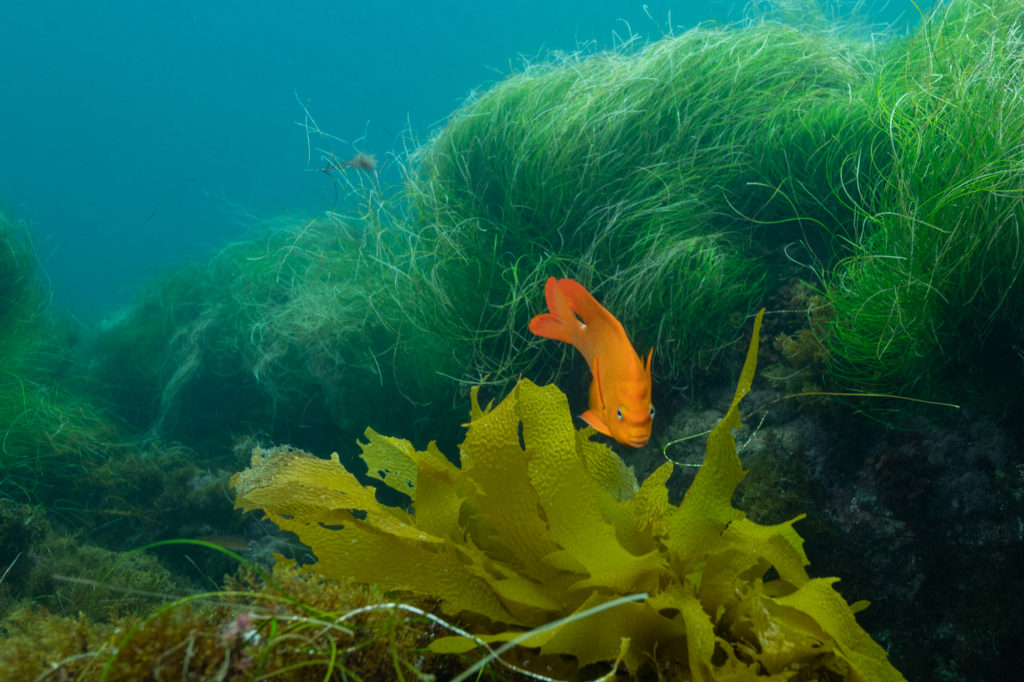
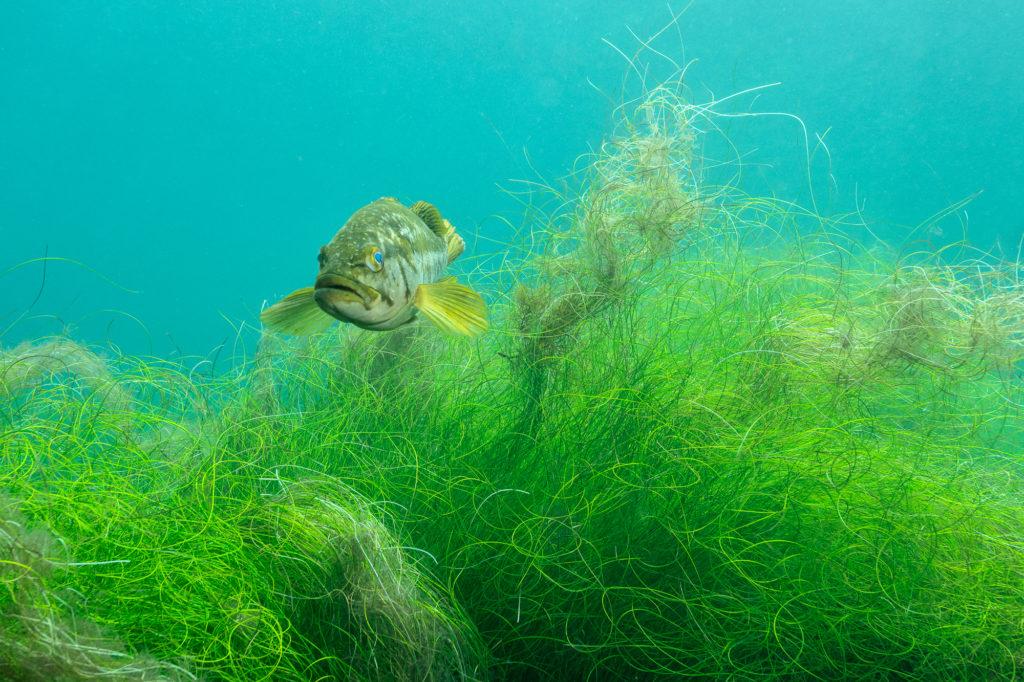
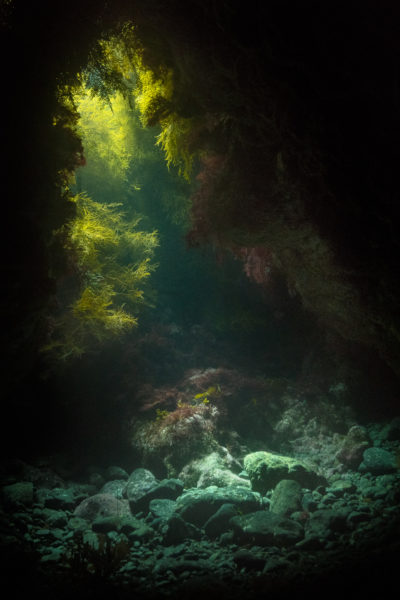
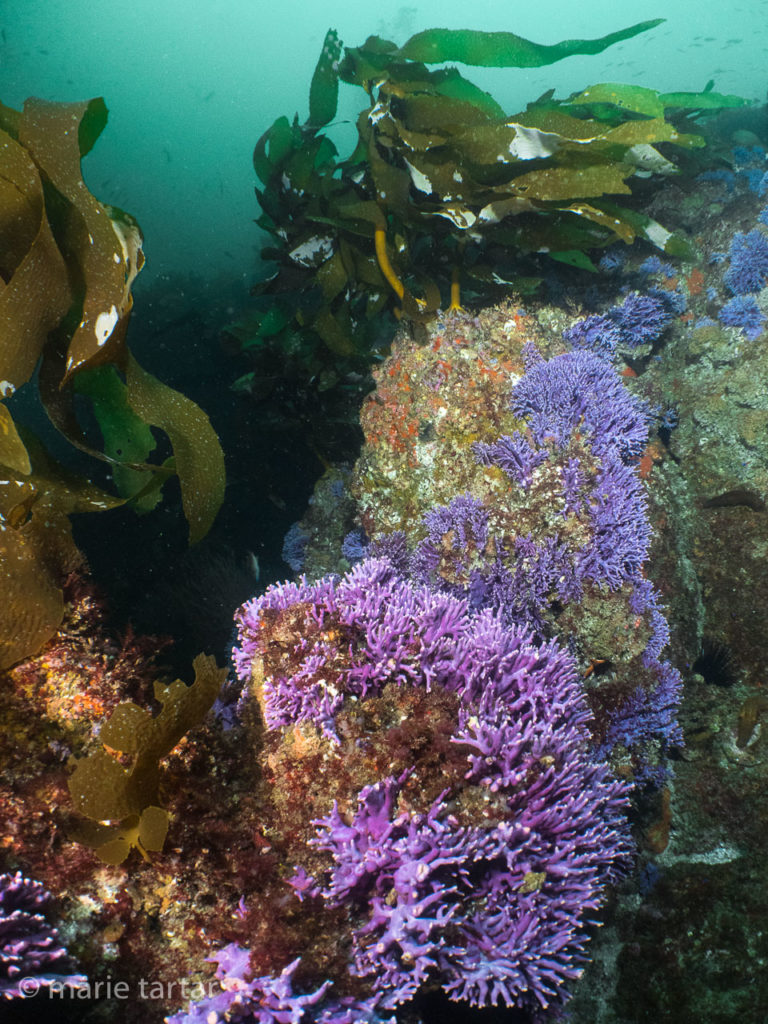
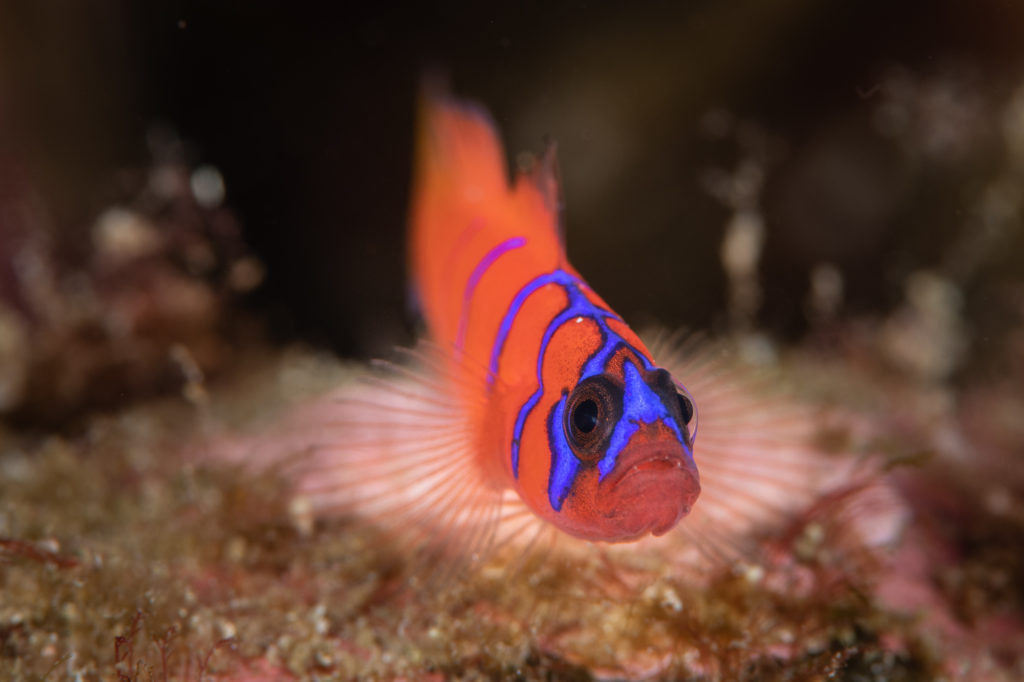
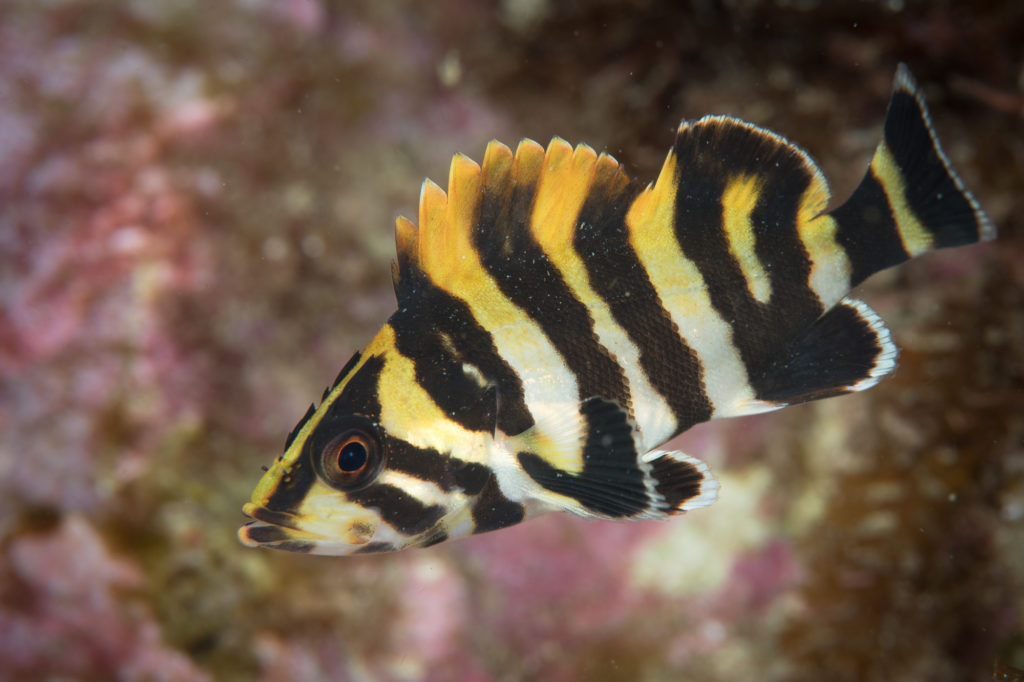

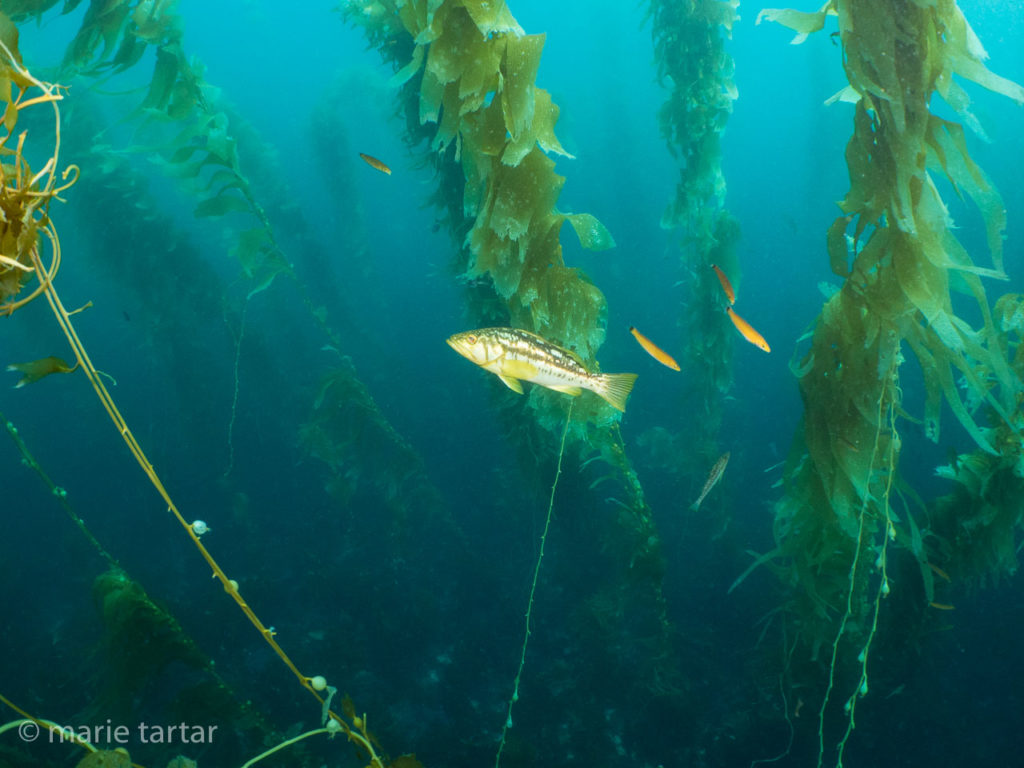
the Macrocystis pyrifera is like a fine landscape photo, very striking. Love you adventures and amazing underwater photography .
Thanks Daryl, for checking it out! Such a wealth of riches in our own backyard, with only a drysuit and determination between us and it!
-Marie